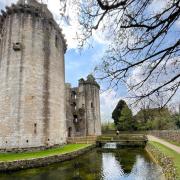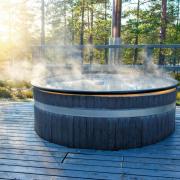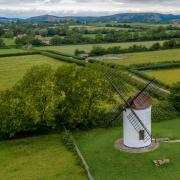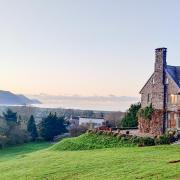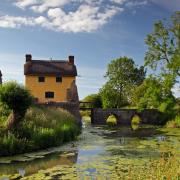Perhaps every Somerset village has an organisation/building that best represents the community spirit of the area. In the case of Nether Stowey it could be the public library. The building itself was constructed by tanner and local philanthropist, Thomas Poole, who created it as the second free school in the country. The school moved to a modern purpose-built edifice in 1979. Since the millennium the library has been threatened with closure on a couple of occasions and in 2018 the Thomas Poole Library Nether Stowey was registered as a charitable organization to run a community library partnership with a lease of the building for 25 years at a peppercorn rent – over 90 volunteers immediately signed up. Now it’s a thriving institution; a lifeline for older people, an official warm space, there’s computers and a range of literary genres, a knit and natter group, toddlers’ story time and readings to schoolchildren. But in these days, always the threat of closure. The one professional librarian, partly funded by Hinkley Power Station, is Sian Stafford who came to the building as a child when it was a school, went off on her travels and now feels privileged to return as the librarian. She proudly showed me the glass cabinet that displays the work of local artists and craftsmen on a changing basis.
Follow the hill down alongside the brook (which Coleridge called the ‘stinking gutter’ but in fact nowadays is a clear and lively stream) and you get to the centre and the Parish Office. A shop front, no less, another community oddity in a small village. Here, the Clerk, Caro Slaymaker, beavers away whilst offering advice and information to residents or registering complaints, usually the three ‘p’s – parking, planning and poo. Kevin Ferriday, the Chair of the council, joins me on the walk and we immediately encounter the iconic clock tower built in 1897 and alongside it the old goal now used for information display purposes. He said: ‘The first thing you notice is the conservation area in the centre of the village, it’s got a character all of its own – its 17th century suffering from 21st century traffic issues, a little bit.’
Continuing along the road on the right hand side is the village fire station, run by local volunteers, and the award-winning medical centre. On the other side is St Mary’s Church Centre that operates as a meeting place now that the old village hall is no longer really operating after lockdown. Further on is the recreational ground where there are much-anticipated plans to construct a sports pavilion/changing rooms/community centre all in one. Heading up to Nether Stowey Castle we pass ‘happy-to-chat’ benches and the local GP in his landrover – the other vehicular oddity is the farmer in the fields on her quad bike with three dogs perched on the rear. Apart from the Mount there is little stone evidence of the 11th century castle, which was destroyed in the 1400s, but it provides a wonderful viewpoint for the surrounding area. The Quantocks to the rear, the biggest construction site in Europe (Hinkley Point) to the west and Glastonbury Tor to the north. Just up in the hills is an area known as Walford’s Gibbet. John Walford was a charcoal burner who brutally murdered his wife of three weeks, Jane. He was arrested and sentenced to be hanged. Afterwards his body was placed in a cage and hung for a year and a day at the scene of the murder.
Apparently, there is a legend that a giant lives in a cavern under the Mount uttering moans and groans to passing travellers. When I tell this story to Kevin he says he has never learnt this before despite living by the Mount for a decade…though he has heard howls. Maybe it is an FCG, a friendly community giant, guarding and protecting the local library.
Coleridge
In Nether Stowey did Kubla Khan a stately pleasure dome decree…
No he didn’t. But the poet S.T. Coleridge did live here for a few years and wrote some of his most important work during that time including Kubla Khan and The Rime of the Ancient Mariner.
His cottage (that he described as a hovel) on Lime Street has been bought by the National Trust, who have recreated the building and the garden to the way that it would have been in the early 1800s. (Open from March 27th for the season ahead.)
Despite the fact that he lived there more than two hundred years ago his presence continues to permeate the area. Apart from the cottage, the pub opposite is called The Ancient Mariner, there is a Coleridge Road and a 50 mile walking trail that links Nether Stowey to Lynmouth known as the Coleridge Way.
Coleridge may have been one of the subjects of my English Literature O’level but he retains a place in my heart – everyone loves a romantic.
Did you know?
Once a year the women of the village gather in their finery for a short walk from the village cross to Thomas Poole’s gravestone at St Mary’s Church, then across the A39 again, to the church centre. The short hike, on the Saturday closest to Midsummer Day, is in memory of the great benefactor Poole himself and of the Nether Stowey Female Friendly Society that he founded in 1806. Tea, cake and music follow.
Population: 1,482 (2021 census)
STAY
Just two and a half miles away is the very fine Combe House Hotel. Set in an idyllic location and surrounded by a lovely garden, there are 17 individually styled en suite guest bedrooms. The skilled and enthusiastic kitchen staff produce everything from homemade breads to delicious restaurant dinners. enquiries@combehouse.co.uk








